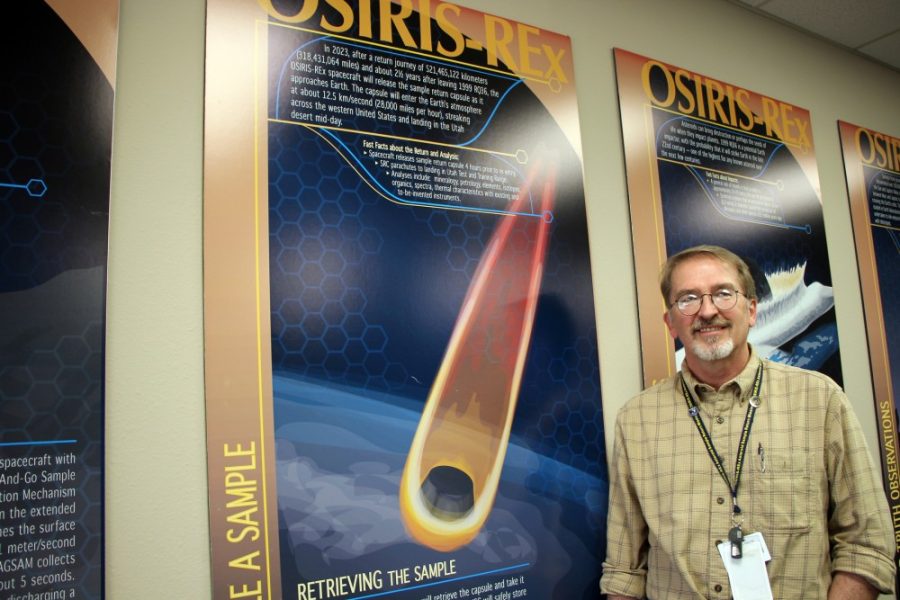Thousands of YouTube videos showcased the explosion of and ensuing damage caused by an asteroid over Russia in February.
The Chelyabinsk asteroid wasn’t big enough to cause any catastrophic damage to Earth, and scientists believed a collision of that size would only occur once every few hundred years.
However, according to new research published in the journal Nature, scientists now believe that Earth has a much higher risk of being hit by similar-sized objects. Such impacts could potentially occur once every decade, according to the New York Times.
Generally, this kind of news inspires a “doom and gloom” reaction among the public, as people may start to think the new research means that they will somehow wind up being annihilated by a falling space rock.
However, researchers at the UA remain adamant that this is not the case.
“From my standpoint, I see it as a really good educational and communication tool rather than something that is really scary or really horrible,” said Anna Spitz, the Communication and Public Engagement Lead for the OSIRIS-REx mission. “It gives us the opportunity to talk about why our efforts are important to look for these sorts of objects.”
Asteroid research is nothing new at the UA, where programs like the Catalina Sky Survey and Spacewatch are well known for their ability to track and record any asteroids or other near-Earth objects that could potentially impact the planet.
“Asteroids come in all sizes, and one of the important problems that astronomers worry about is how many of them there are in each size,” said Ed Beshore, deputy principal investigator on the OSIRIS-REx mission and former principal investigator of the Catalina Sky Survey.
In our solar system, most of the asteroids are smaller in size, like the one that struck Chelyabinsk, according to Beshore.
Despite their size, these small rocks can still do some damage.
“[Chelybinsk] showed us that these small objects could be potentially dangerous,” said Dante Lauretta, principal investigator on the OSIRIS-REx mission.
These smaller space rocks are more difficult to detect because of their size, and for astronomers to see them, they need to be fairly close to our planet. However, this doesn’t slow down work at the Catalina Sky Survey, which manages to detect more of these smaller asteroids than any other observation program, Beshore said.
Luckily for us, astronomers are well aware of the presence of most of these near-Earth objects, especially the large asteroids that could cause catastrophic damage to the Earth. According to Beshore, 90 to 95 percent of these large asteroids have been found and are being tracked, which has eliminated a huge amount of risk for the Earth.
While tracking these near-Earth objects is important for risk management, understanding the characteristics of different asteroids and the forces that make them dangerous to Earth are also significant areas of research at the UA, as the knowledge allows scientists to answer questions about the early solar system.
“We are trying to figure out basic questions of, where did the water on Earth come from? Where did the organics that fuel life [come from]?” Beshore said. “And we think that possibly, they came from the asteroids.”
The desire to understand the conditions of the early solar system and to characterize asteroids has also inspired the OSIRIS-REx mission at the UA. The mission, which sees the UA partnering with NASA, will send a spacecraft to a nearby asteroid known as Bennu to collect a sample, then return the sample to Earth for continued study.
The ability to bring back a sample of the asteroid is what the researchers call the threshold objective for the mission, as it is the most important aspect of the research. Having the sample will not only allow scientists to work with more precise instruments, according to Beshore, but will also allow continued study for years to come.
While the research coming out of the UA emphasizes learning about the characteristics of asteroids, Spitz recognizes that many people will still be primarily concerned with the dangers asteroids pose.
“What people really think about is, ‘Is it going to hit me on the head?’” she said. “It’s a really nice entryway for us to talk more generally about the mission.”
Even though the news of more asteroid strikes may cause people to cast an eye towards the sky, astronomers remain optimistic.
“I think the lesson we need to take from this is that we shouldn’t be running for the exits,” Beshore said. “It’s a natural hazard, and something we are very familiar with.”



